3 Strategies For Setting Healthy Boundaries From Therapists in Maryland
As therapists, we are regularly talking with people about boundary setting. While boundaries are often necessary, the idea of setting them can create a lot of anxiety for people. To support you in your boundary setting, we’ve asked several of our Baltimore County therapists to share some of their favorite tips for setting healthy boundaries. Read below for some of their favorite strategies, and try implementing the ones that resonate with you.
Recognizing Healthy Boundaries with the D.E.A.R.M.A.N. Approach
Here’s our first strategy from Sophie Koch, LGPC.
It can be difficult to know what a healthy boundary is or how to set one. Rather than the challenge of knowing where to start when it comes to boundary setting keep you in a cycle of compromising your needs, try DEARMAN! It stands for:
D- Describe (describe the boundary or what you are needing from the other person)
E- Express (express how you are feeling or thinking and why you need this boundary)
A- Assert (assert yourself by blatantly and specifically identifying the boundary and how you would like it implemented)
R- Reinforce (reinforce why this boundary is needed and why it will be beneficial for the relationship)
M- Mindful (remain mindful of the goal of this boundary and the act of setting it. This means eliminating distraction, remaining firm in your boundary, and continuing to ask for what you need)
A- Appear (appear confident through your tone of voice, body language, facial expression, and eye contact)
N- Negotiate (negotiate with the other person to ensure that you can set your boundary and focus on what will work best in order to ensure that boundary is respected)
This is a skill from Dialectical Behavior Therapy (DBT) that is used to help create a script for asking someone for something you want without compromising the relationship or your needs.
Every situation is different and how DEARMAN can be used with one person may look different from how you will use it. Despite this, having a framework to base your boundary setting steps can help you navigate the challenge of healthy boundary setting.
Changing Your Mindset on Boundaries
Strategy #2 is from Michaela Langley, LGPC.
Change your mindset on boundaries - healthy boundaries are not mean or rude; healthy boundaries are necessary for healthy relationships! Healthy boundaries are also: respectful, liberating, empowering, stress-reducing, a form of self-care, and essential to mental wellness.
Identify. Communicate. Respect.
Strategy #3 is from Chelsea Cowden, LGPC.
Identify Your Needs: Take some time to reflect on your own needs, values, and limits. Clarify what is important to you in your relationships and what behaviors or situations you're not comfortable with.
Communicate Clearly: Clearly communicate your boundaries to the other person in a calm and assertive manner. Use "I" statements to express your feelings and needs directly, rather than blaming or criticizing the other person.
Respect Others' Boundaries: Just as you expect others to respect your boundaries, be respectful of others' boundaries as well. Listen actively, honor their requests, and avoid pressuring or manipulating them into violating their boundaries.
If you’re the person who has struggled with setting boundaries, we hope that you’ll find at least one of these strategies helpful. Understanding how to set boundaries is one step in the process. The next step is implementing your new skills and testing them out. Remember, learning new skills takes practice, and the more you practice, the more confident you’ll feel!
Search Our Other Blogs!
Interested in Counseling for Communication Skills and Boundary Setting?
If you’re a Marylander who knows that counseling is the direction you need to take, the therapists at LifeSpring Counseling Services are here to help. We offer online counseling services for mindfulness, depression, anxiety, trauma, and grief and loss. We also offer Brainspotting as a specialized service, and Brainspotting can be done online, too!
Here’s how you can get started! Online counseling for communication skills and boundary setting aren’t the only services offered at our Monkton, Maryland office.
The counselors and social workers at our Maryland office also offer counseling services for trauma, grief and loss, boundary setting, communication skills, and difficult life transitions. We also offer specialized counseling services including Brainspotting and spiritually-integrated counseling. Because we are located next to several local universities, we also work with college students and international students.

